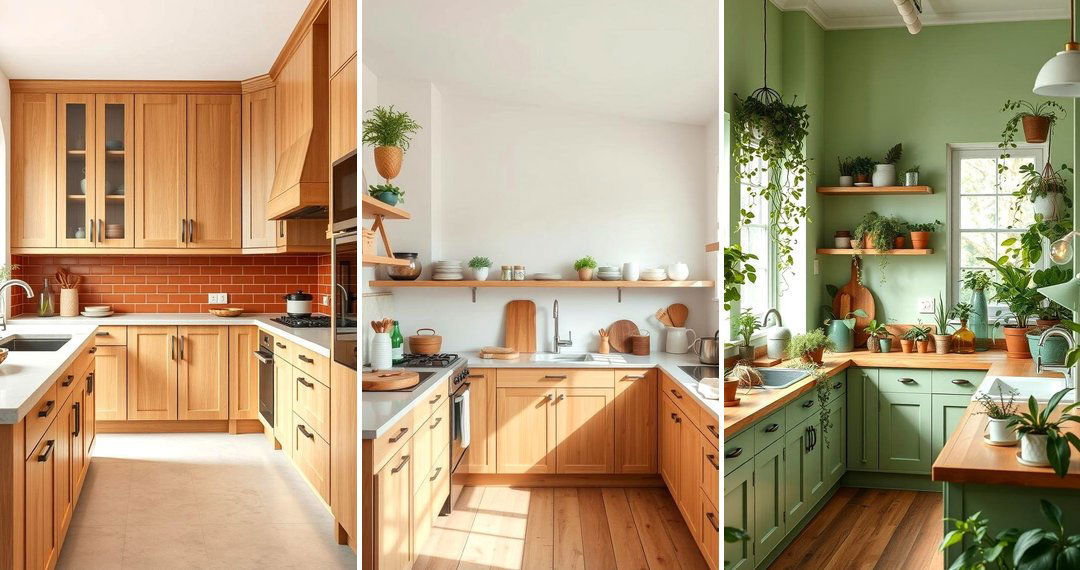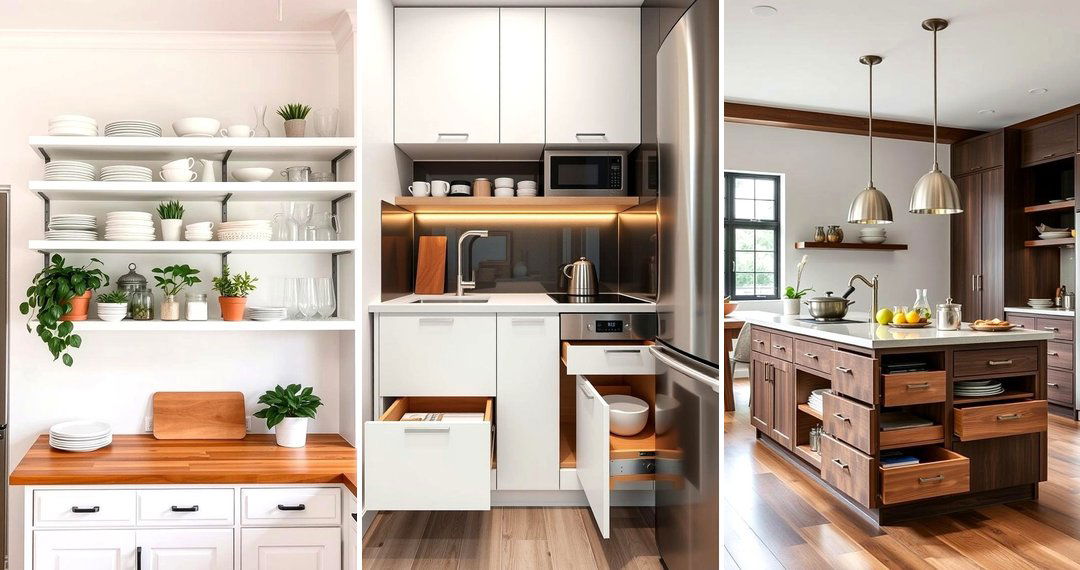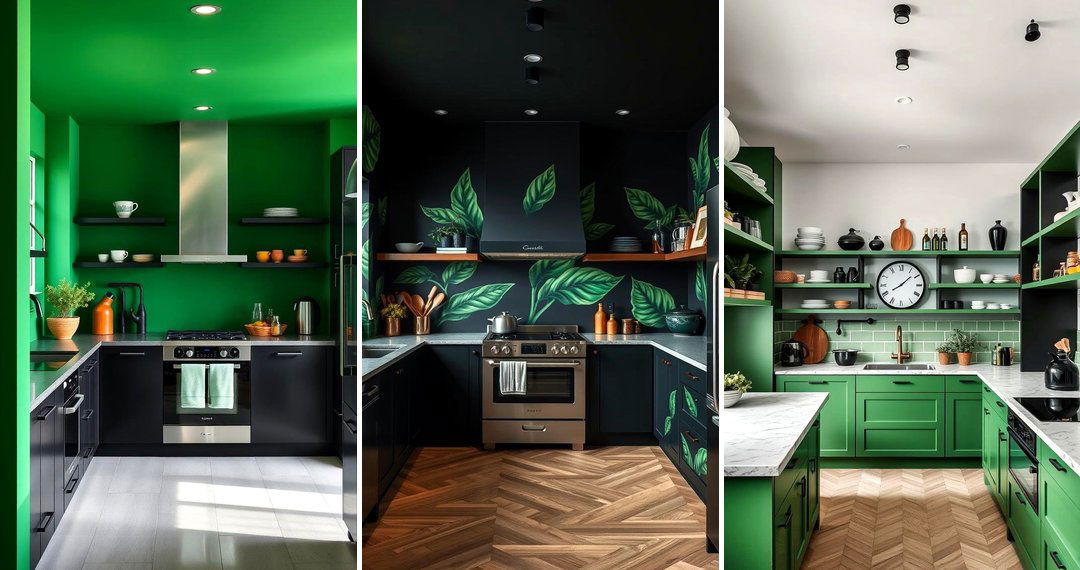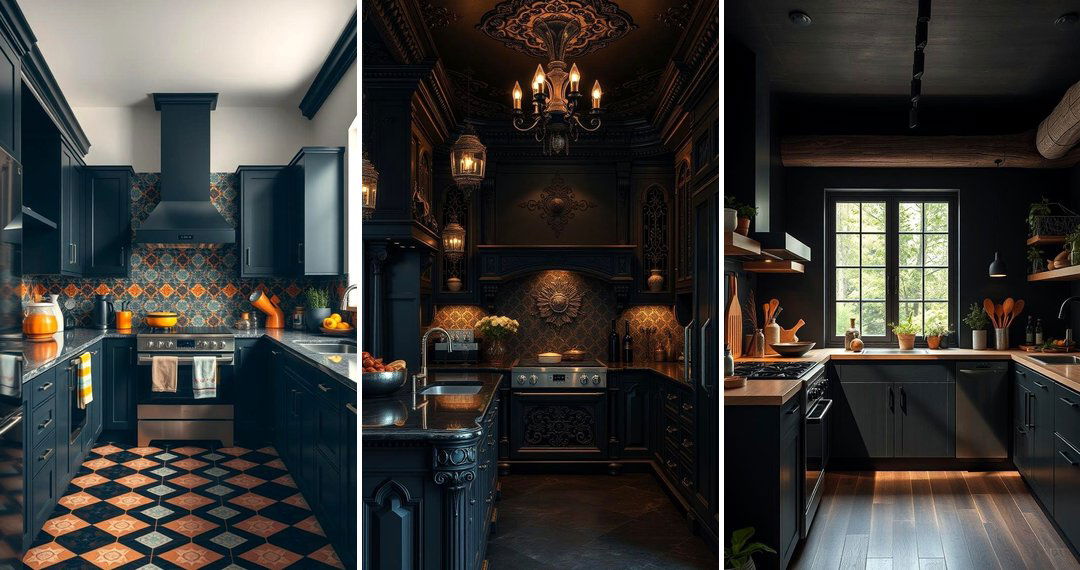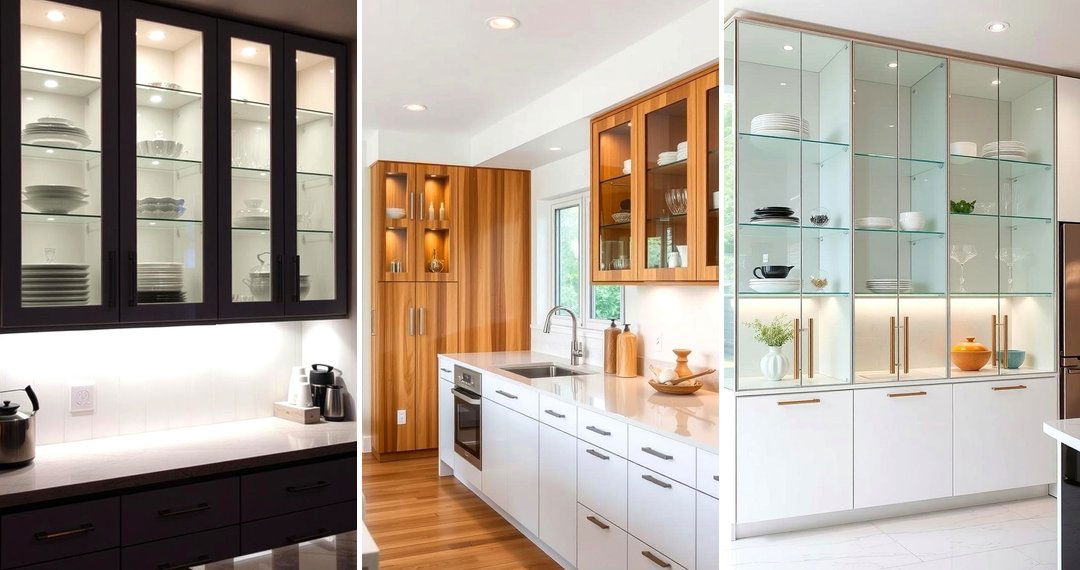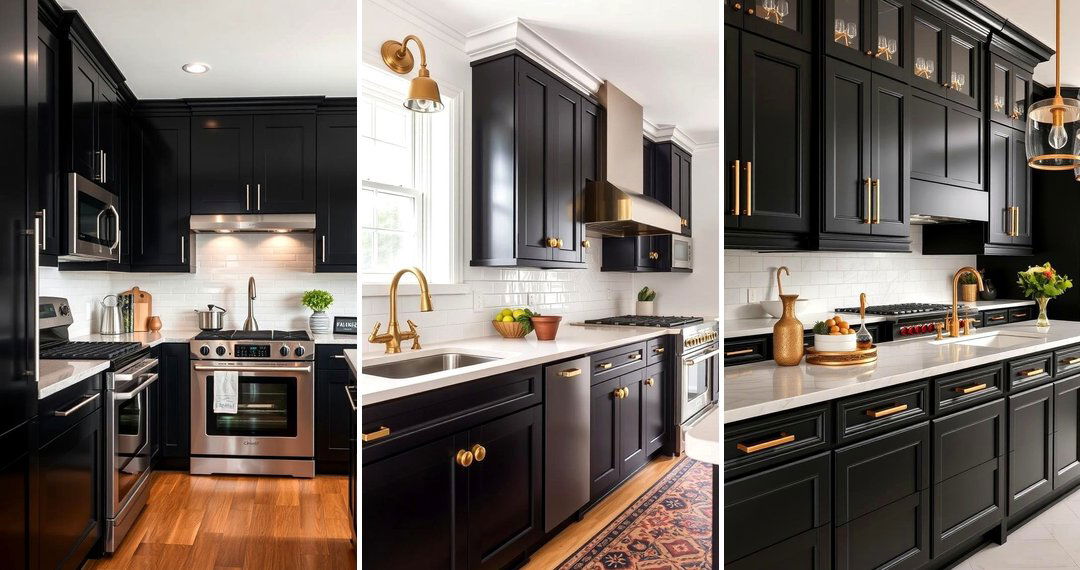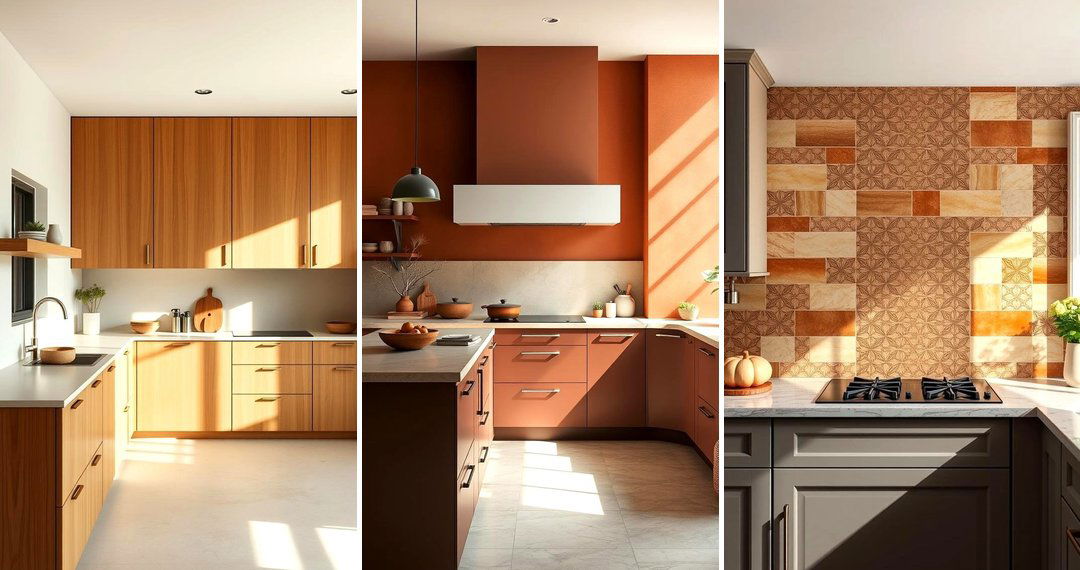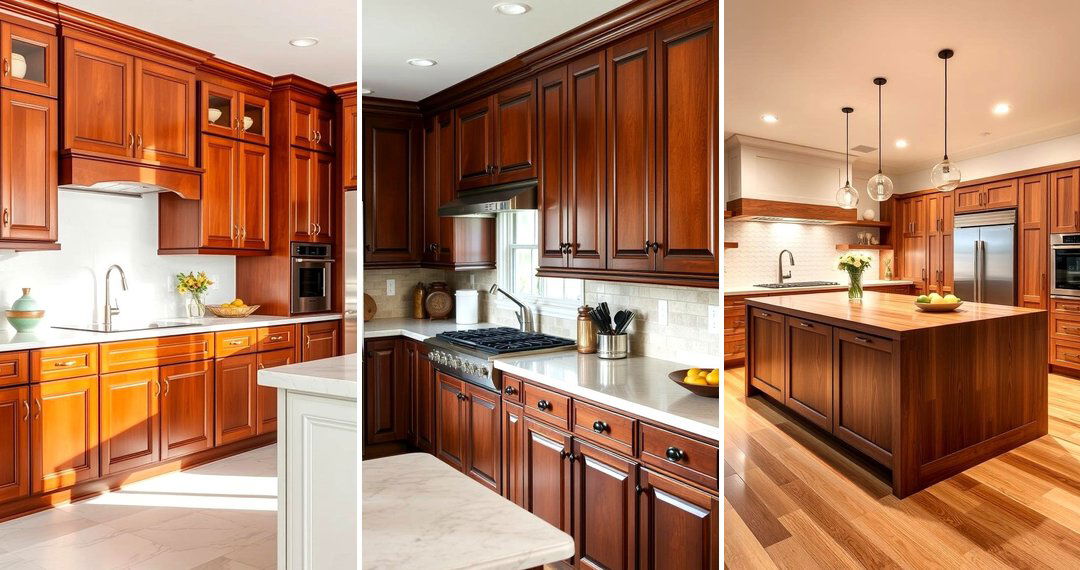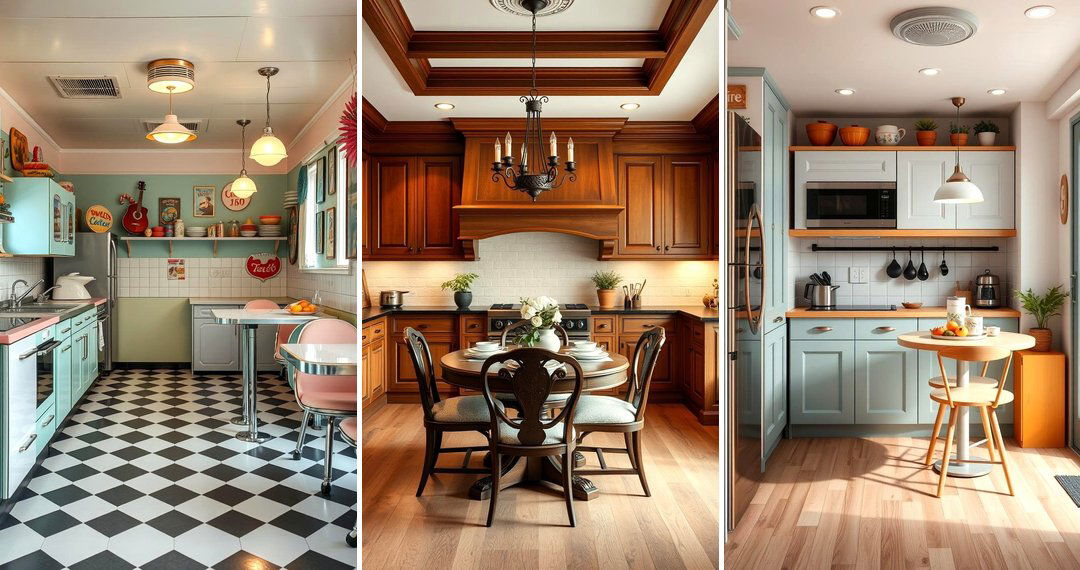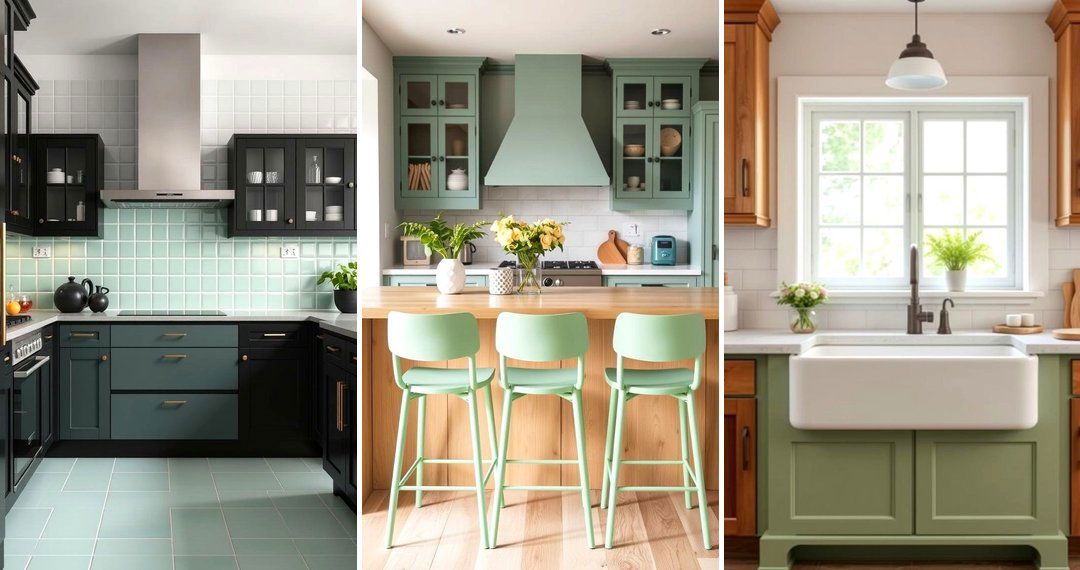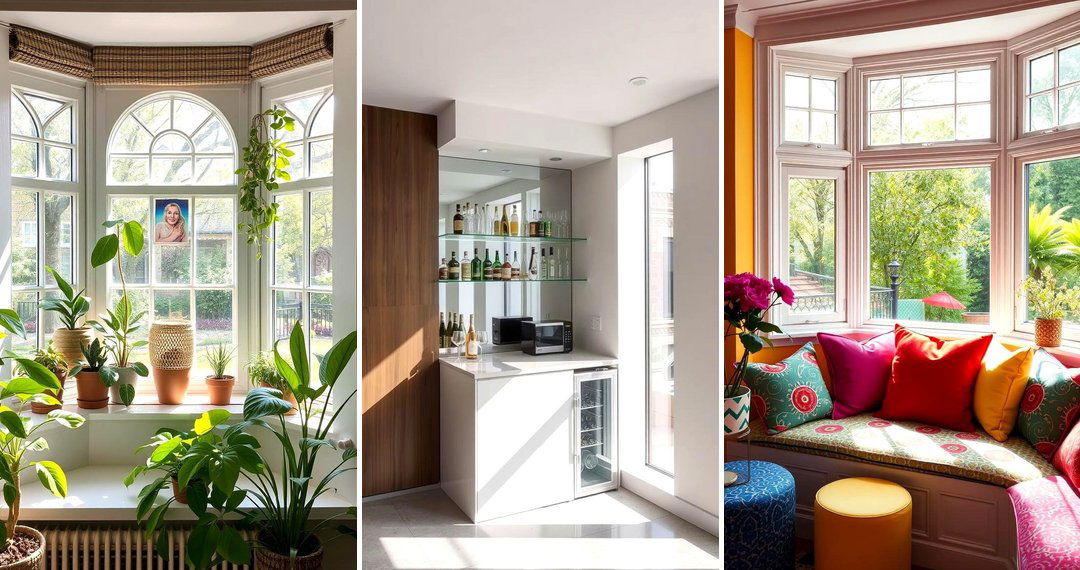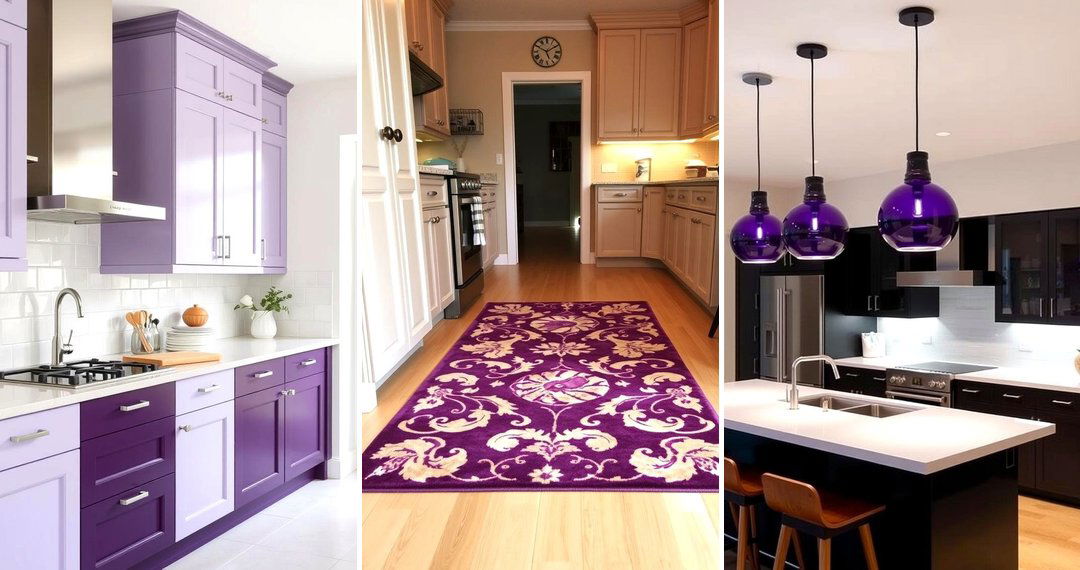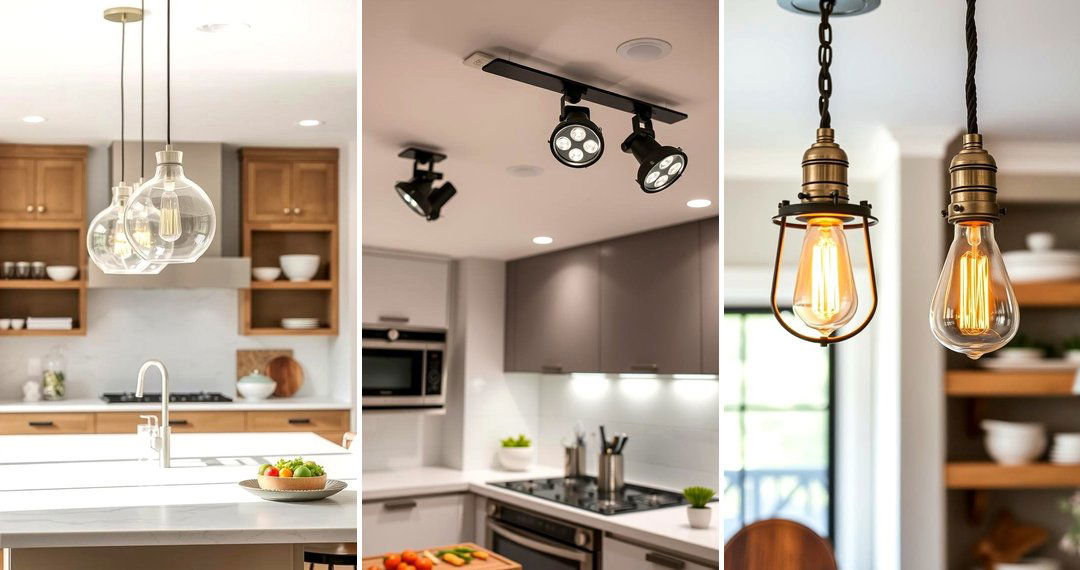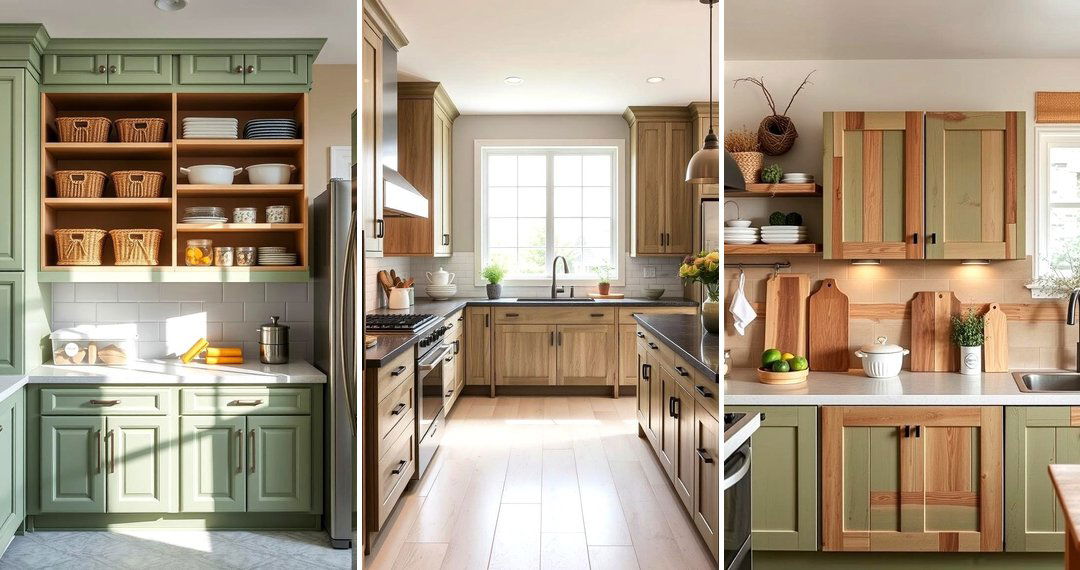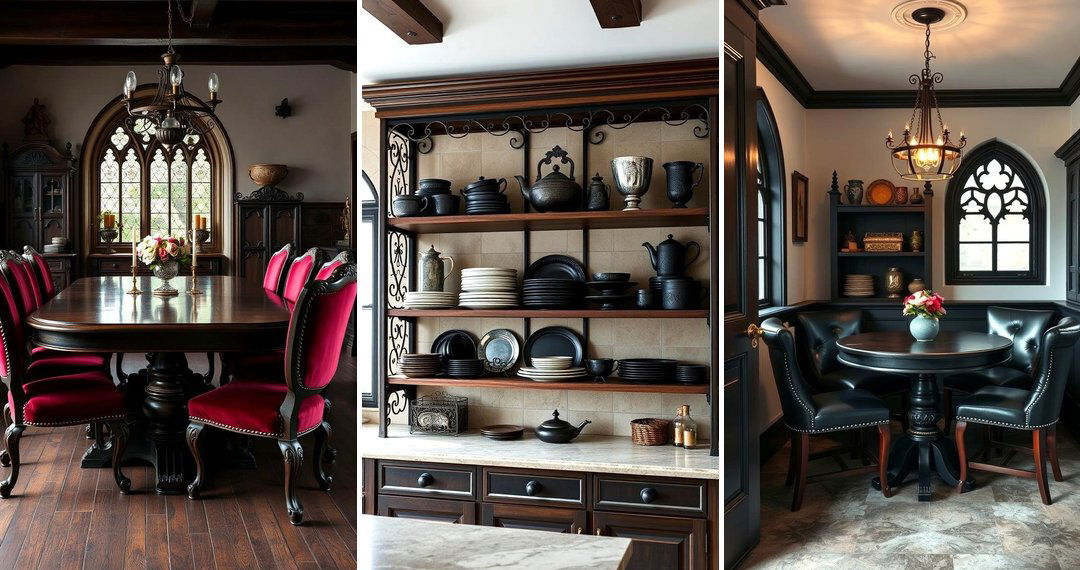Natural materials and timeless designs can truly transform a kitchen, turning it into a serene, welcoming space. From earthy textures to sustainable choices, integrating nature into your kitchen can enhance both its beauty and functionality. Whether you’re drawn to rustic charm or minimalist elegance, these natural kitchen design ideas offer a wide range of possibilities to create your dream cooking space. With every design, you can not only elevate the aesthetics but also introduce sustainable practices into your home. Get ready to explore practical yet stylish ideas that harmonize with nature’s simplicity.
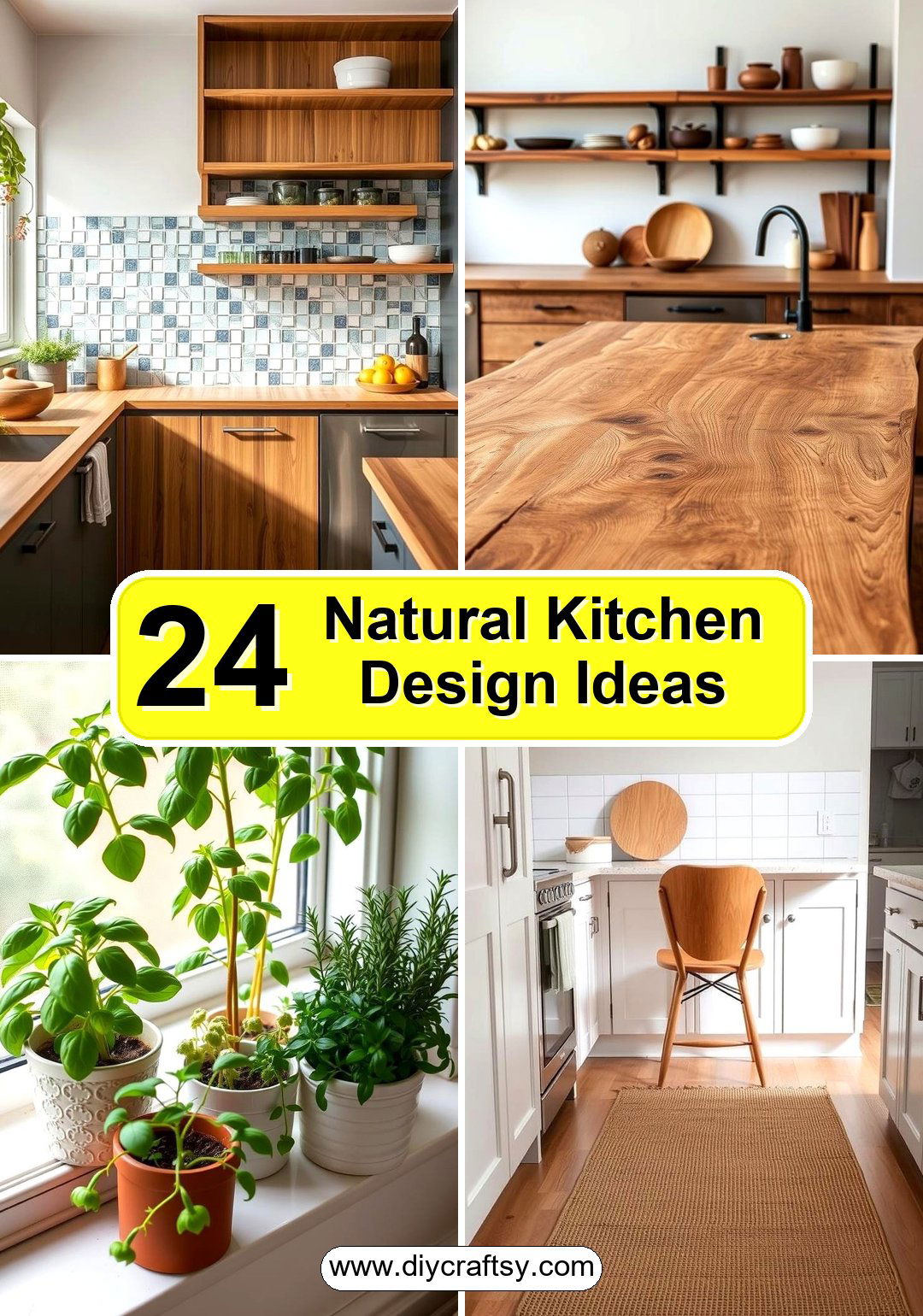
1. Incorporating Natural Stone Countertops
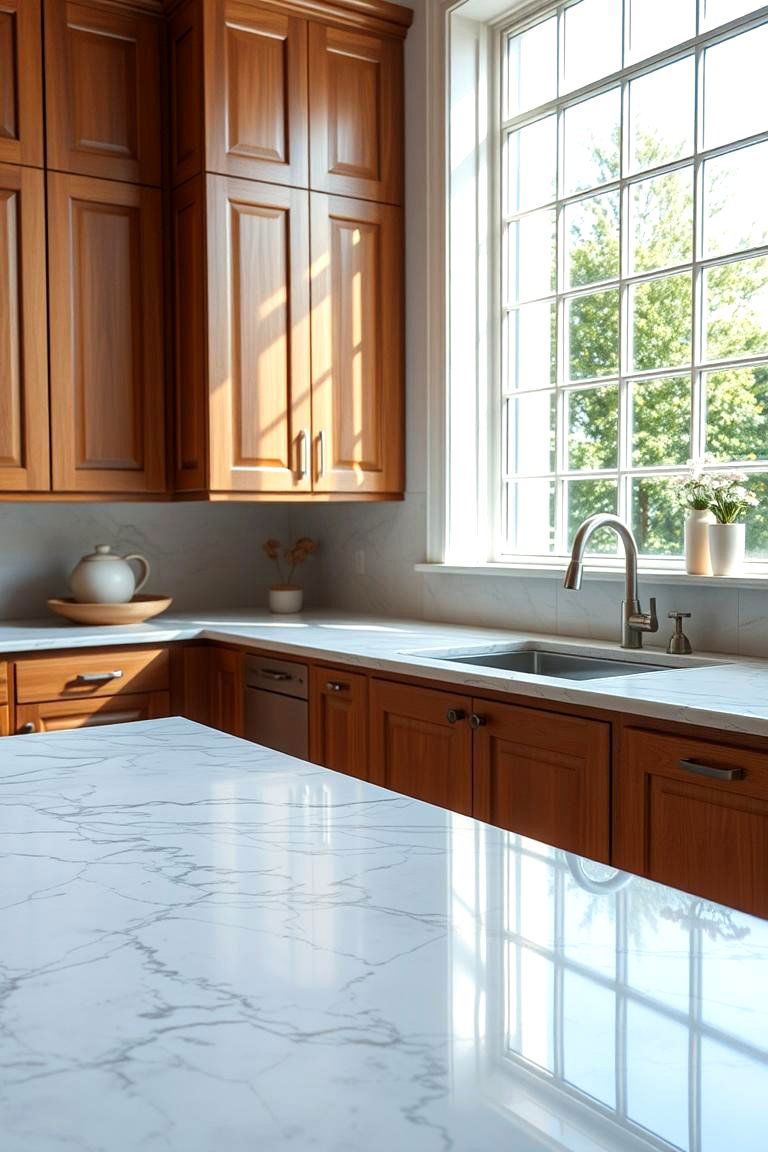
A natural stone countertop, such as marble or granite, brings an air of elegance and durability to your kitchen. These materials are not only visually stunning but also incredibly long-lasting and resistant to wear and tear. The veining in stones like marble adds unique, organic patterns, making each surface one-of-a-kind. Additionally, stone countertops are easy to clean, making them a practical yet luxurious choice. Choosing natural stone helps elevate the kitchen’s aesthetic while offering functionality that can withstand the demands of daily use.
2. Open Wooden Shelving
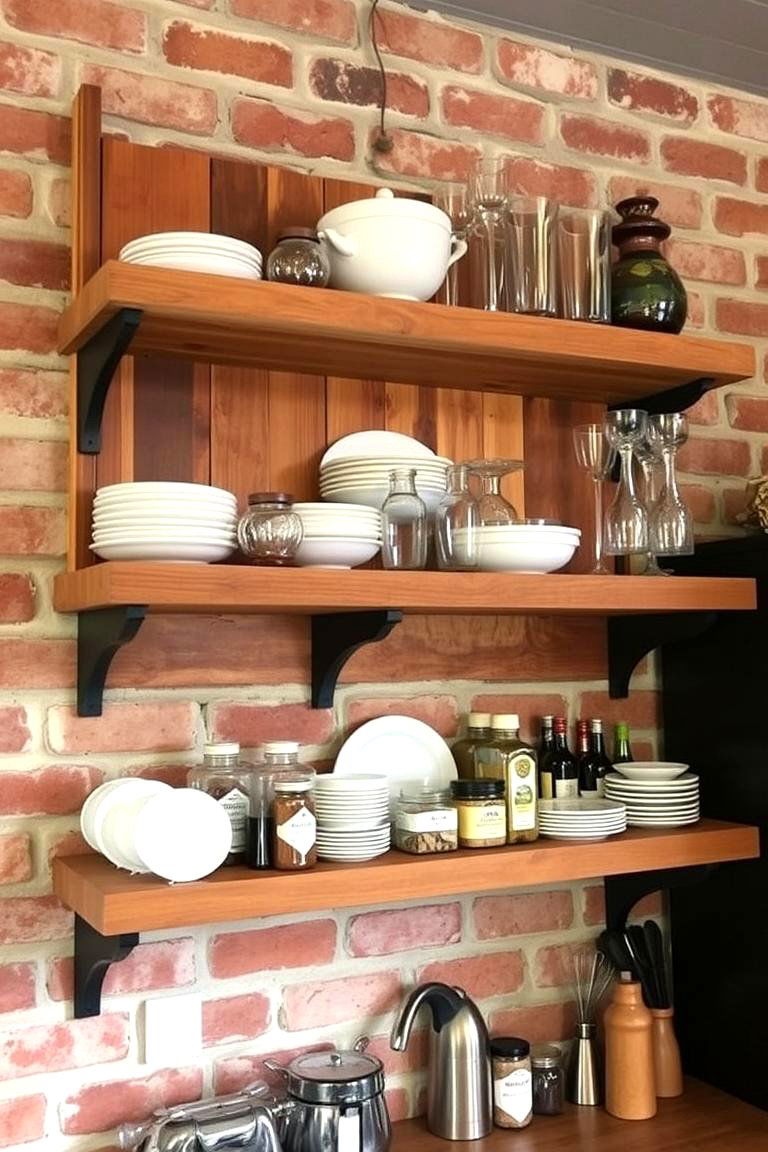
Open shelving made from reclaimed wood adds both rustic charm and modern style to a kitchen. This design choice allows for easy access to your kitchen essentials and encourages an organized space. Wooden shelves create a warm, inviting atmosphere while showcasing your collection of plates, glasses, and cooking tools. Additionally, using reclaimed wood contributes to sustainability by repurposing old materials. This simple yet stylish solution gives your kitchen a natural, airy feel and keeps everything within reach, combining form and function beautifully.
3. Earthy Tile Backsplashes

A tile backsplash with earthy tones, like terracotta or matte stone, enhances your kitchen with subtle texture and color. The warmth of natural tiles adds depth to your design while maintaining a timeless look. Terracotta tiles, in particular, offer a rustic appeal that evokes a Mediterranean or Southwestern feel. These tiles are not only aesthetically pleasing but also easy to maintain, providing an excellent option for creating a natural look that will last. A well-designed backsplash can be the perfect finishing touch to any natural kitchen.
4. Bamboo Flooring
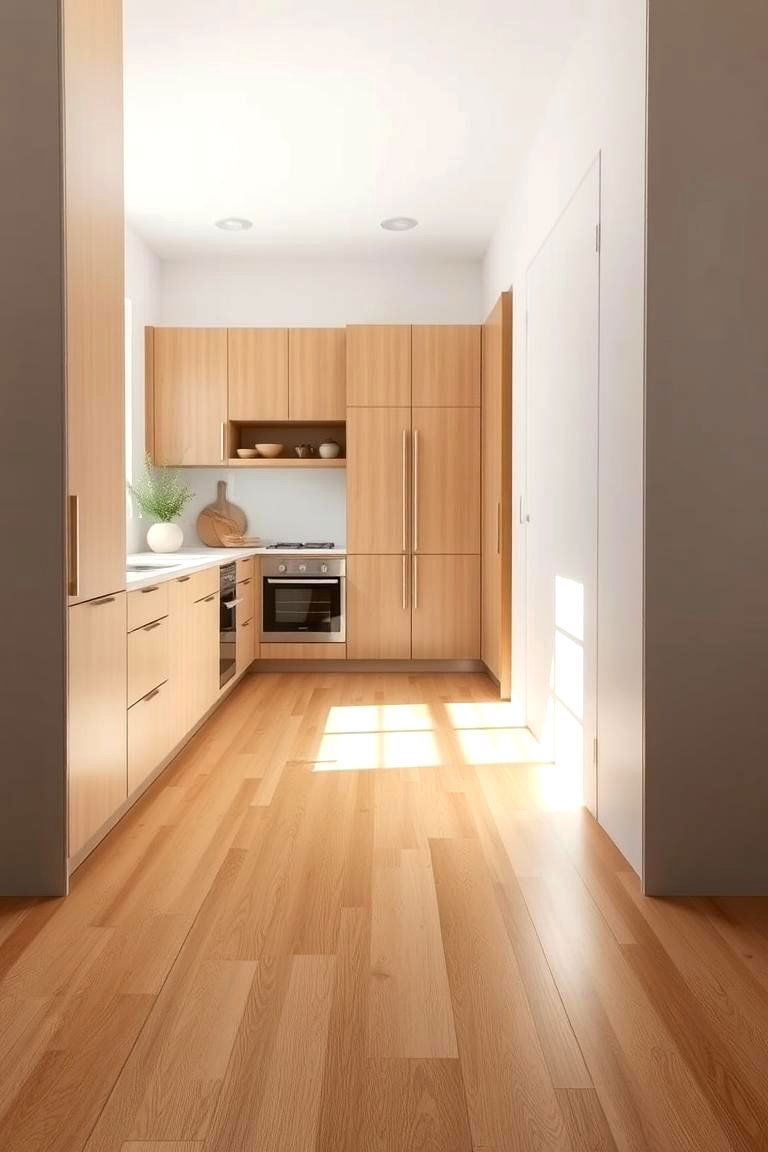
Bamboo flooring is an eco-friendly and sustainable option for a natural kitchen. Known for its strength and resilience, bamboo provides a sleek, modern look while offering a softer touch than traditional hardwood floors. It’s also an environmentally conscious choice, as bamboo grows quickly and requires minimal resources to cultivate. This flooring option is easy to maintain and can handle the demands of high-traffic areas. Bamboo’s light, neutral color complements a wide range of kitchen designs, making it a versatile and sustainable choice.
5. Indoor Herb Gardens
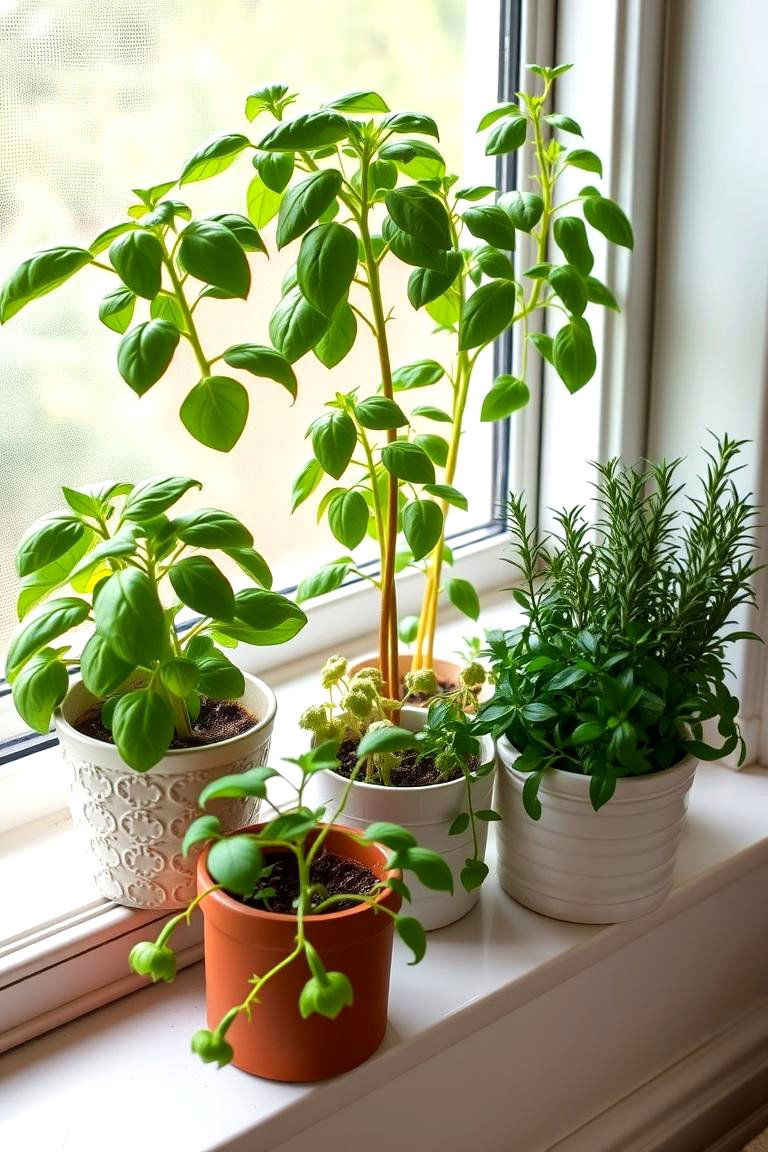
Bringing the outdoors inside by incorporating an indoor herb garden adds both beauty and functionality to your kitchen. Fresh herbs like basil, mint, and rosemary not only enhance the aesthetic of your space but also provide a steady supply of ingredients for your cooking. Consider placing them in stylish planters on windowsills or in small pots arranged on a counter. An indoor herb garden encourages healthy eating, reduces food waste, and creates a cozy, natural atmosphere. It’s a simple addition that connects your kitchen with nature and supports sustainable living.
6. Natural Wood Cabinetry
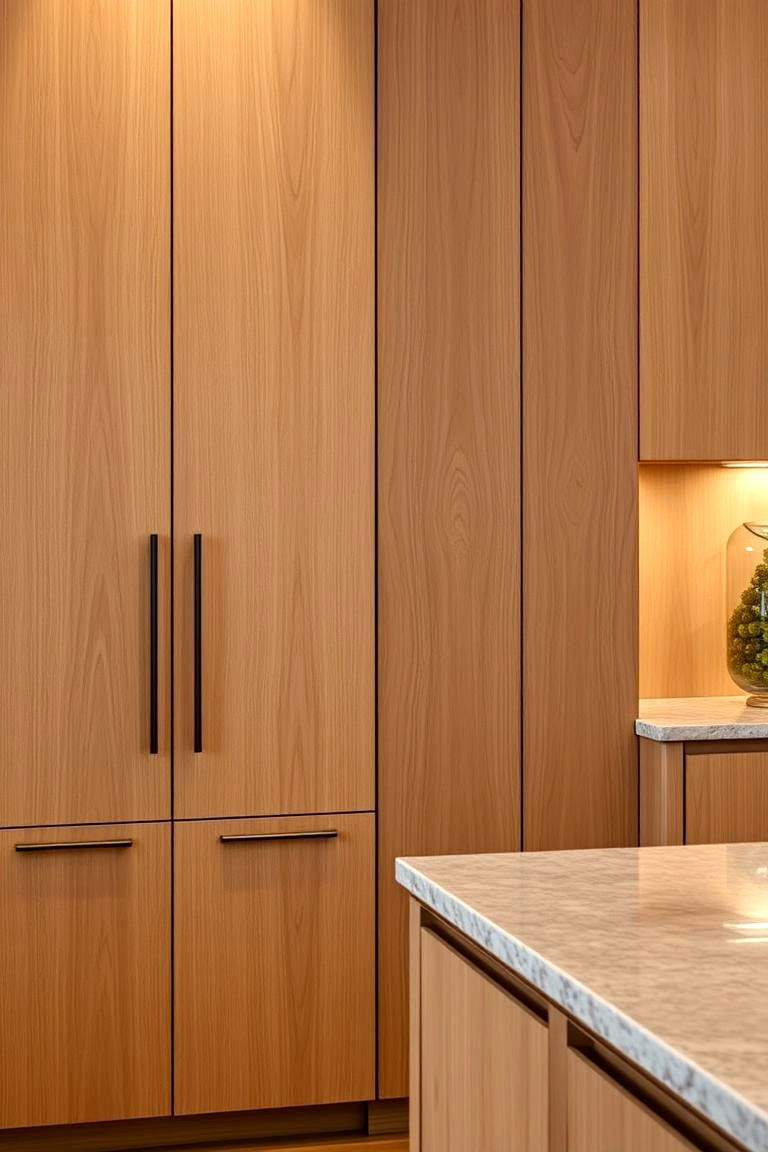
Natural wood cabinetry brings timeless elegance and warmth to any kitchen. The rich grains and textures of materials like oak, walnut, or maple create a sophisticated, inviting environment. Wood cabinetry can be treated to highlight its natural beauty, enhancing the kitchen’s overall aesthetic. It offers versatility, as wood pairs well with both contemporary and traditional styles. Additionally, choosing sustainably sourced wood helps reduce environmental impact, allowing you to embrace nature both in your home and through your choices. This enduring material stands the test of time in both style and durability.
7. Stone Sinks

A stone sink, made from materials like granite or soapstone, adds a bold, natural element to your kitchen. These sinks are incredibly durable, resistant to scratching, and easy to clean, making them practical for everyday use. The texture and finish of stone lend a unique touch to the kitchen, making it a statement piece. With their natural hues, stone sinks fit perfectly with other earthy materials like wood and tile, creating a cohesive, nature-inspired design. This addition enhances the kitchen’s functionality while offering an organic and timeless look.
8. Natural Lighting

Maximizing natural light is one of the simplest ways to create a warm, inviting kitchen. Large windows, skylights, or strategically placed glass doors can bring an abundance of sunlight into your cooking space, making it feel larger and more open. Natural light not only enhances the aesthetic appeal of your kitchen but also improves mood and productivity. It can highlight the beauty of natural materials like wood and stone, giving them a glow that artificial lighting can’t replicate. By embracing natural light, you create a brighter, healthier kitchen environment.
9. Rustic Stone Walls
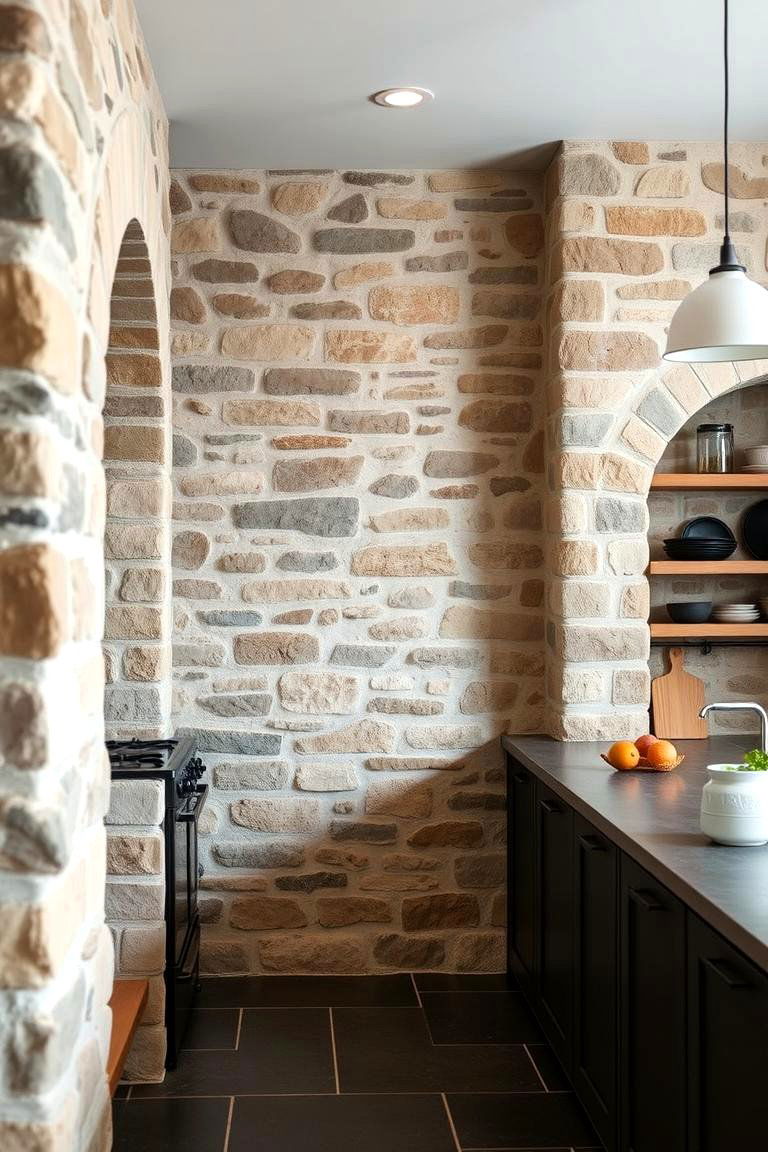
Stone walls in the kitchen introduce a rustic, natural texture that complements other organic design elements. Exposed brick, slate, or limestone walls provide a sense of earthiness and timeless appeal. This feature works especially well in rustic, farmhouse, or industrial-style kitchens. The tactile nature of stone adds depth and warmth to the space, creating an inviting atmosphere. A stone wall not only enhances the kitchen’s aesthetic but also acts as a durable, low-maintenance backdrop that improves acoustics and adds a layer of visual interest.
10. Sustainable Materials
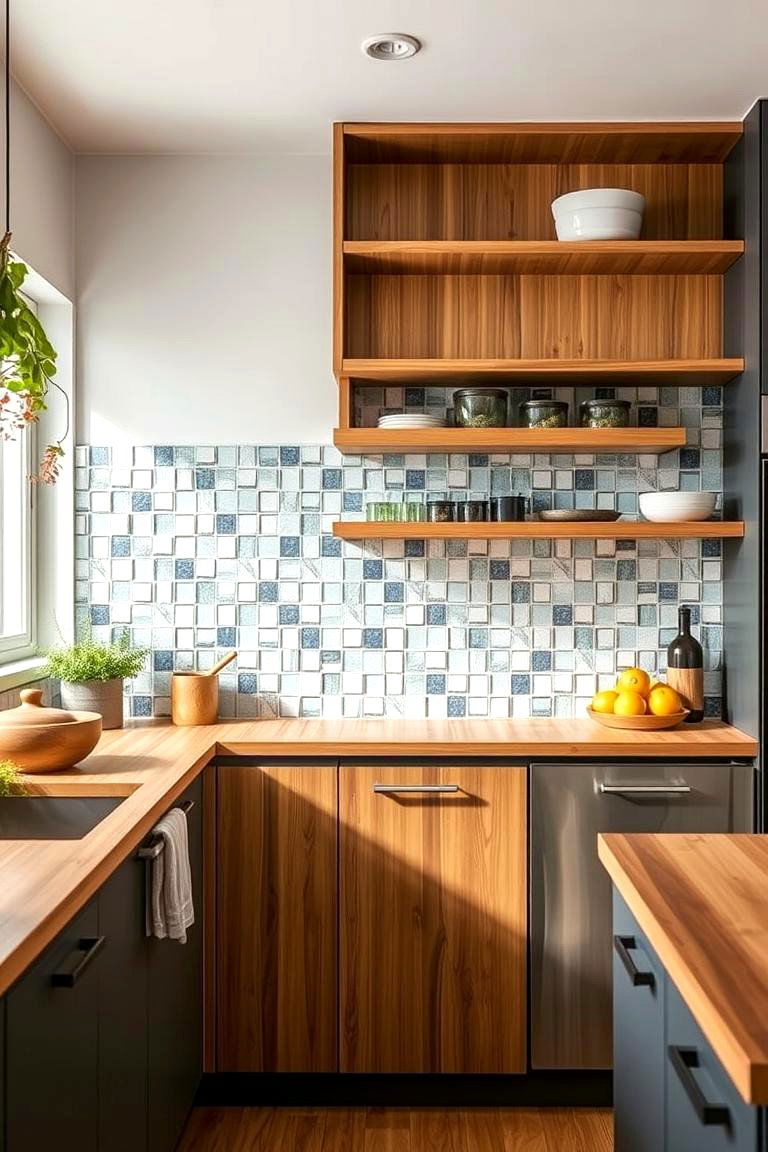
Sustainability is a key aspect of natural kitchen design, and incorporating eco-friendly materials can make a big difference. Opting for sustainable options like bamboo, cork, and recycled glass helps reduce your environmental footprint. These materials are not only eco-conscious but also offer a unique aesthetic appeal. Recycled glass countertops, for example, have a striking, modern look while being durable and low-maintenance. Using sustainable materials ensures that your kitchen is both beautiful and responsible, aligning your design choices with your values.
11. Green Accents and Plants
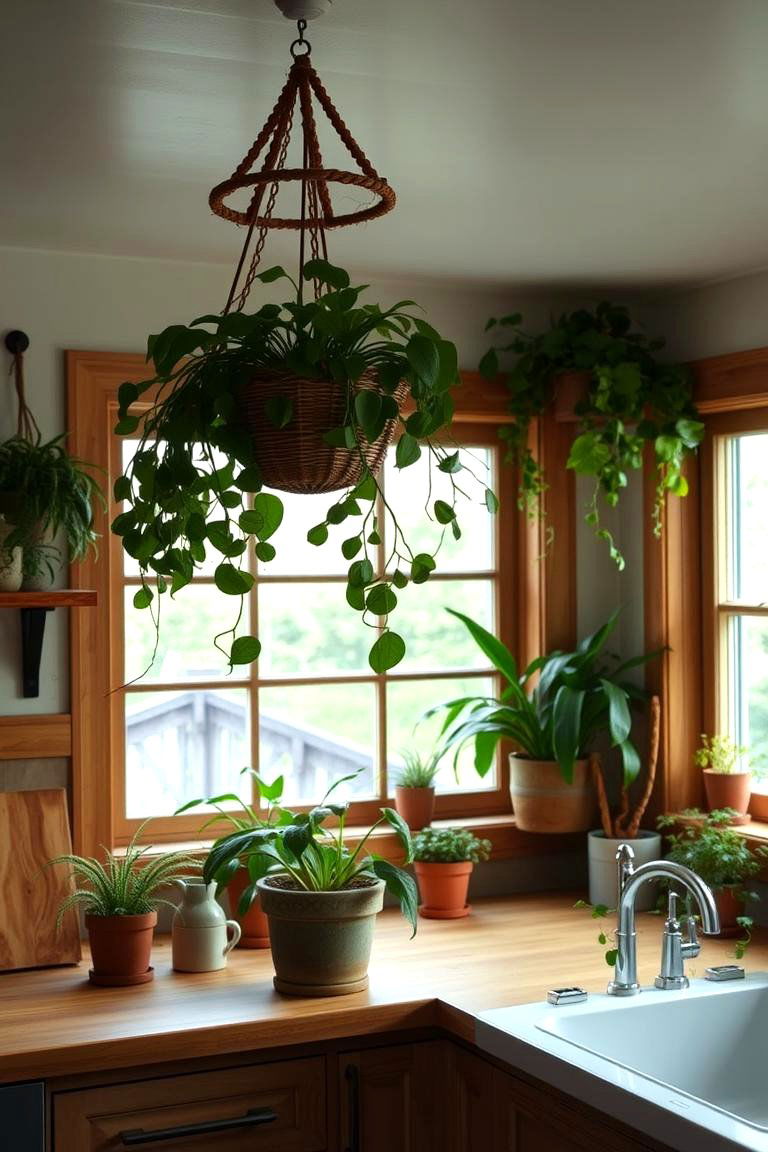
Integrating indoor plants into your kitchen is a simple yet effective way to enhance its natural ambiance. Plants add a pop of greenery and purify the air, improving the overall atmosphere. From hanging plants to potted succulents on windowsills, adding greenery brings life to your kitchen while supporting health and well-being. Choose plants that thrive in indoor environments, such as herbs, ivy, or peace lilies, for a vibrant and refreshing kitchen. These natural accents contribute to a serene, calming atmosphere that enhances the cooking experience.
12. Reclaimed Wood Features

Incorporating reclaimed wood into your kitchen design brings history and character to the space. Whether through countertops, shelves, or accent walls, reclaimed wood adds texture and a sense of authenticity. By repurposing materials, you contribute to sustainability and reduce waste. The natural imperfections of reclaimed wood, such as knots and varied hues, add charm and uniqueness to your kitchen. This material offers warmth and personality, making it an ideal choice for a kitchen that feels both natural and full of character.
13. Natural Stone Flooring
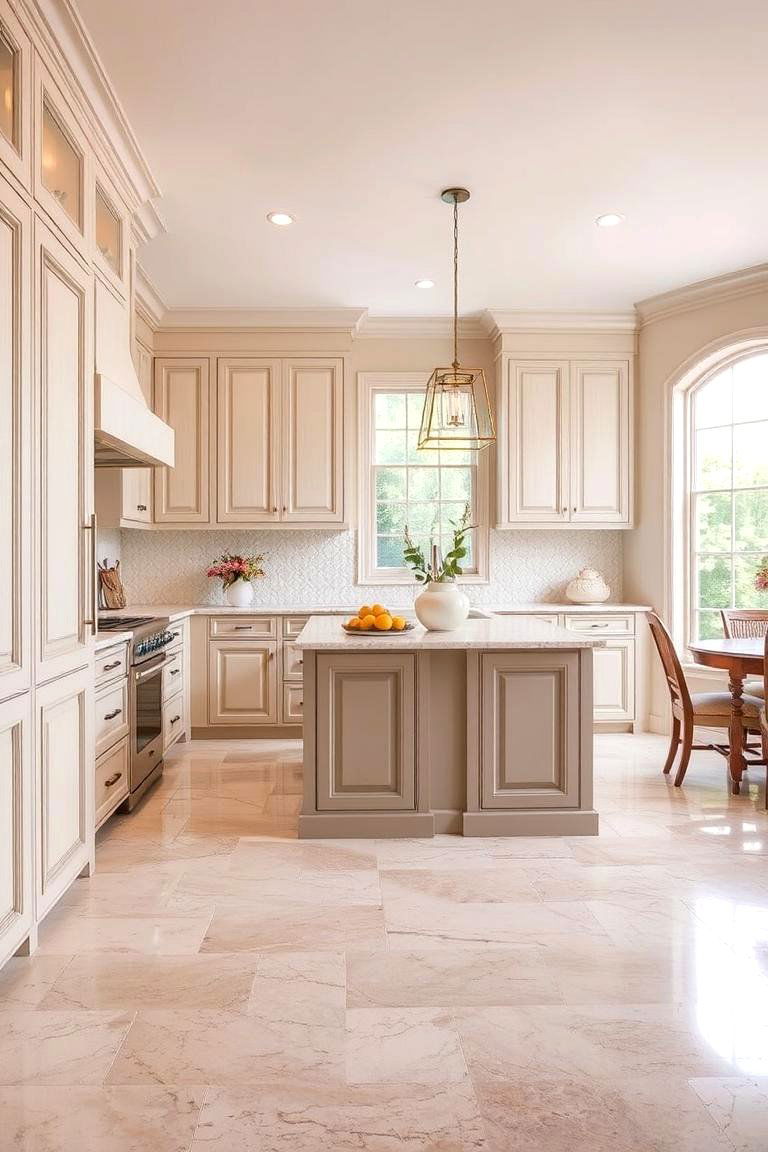
Stone flooring, such as slate or travertine, provides a durable, natural surface that enhances your kitchen’s design. The texture and colors of natural stone add depth and interest, creating a timeless and elegant look. Stone is a great option for high-traffic areas due to its durability and ease of maintenance. With proper care, stone floors can last for decades, maintaining their beauty over time. This material is perfect for those seeking an enduring, low-maintenance option that contributes to a natural, grounded atmosphere in the kitchen.
14. Soft Neutral Tones
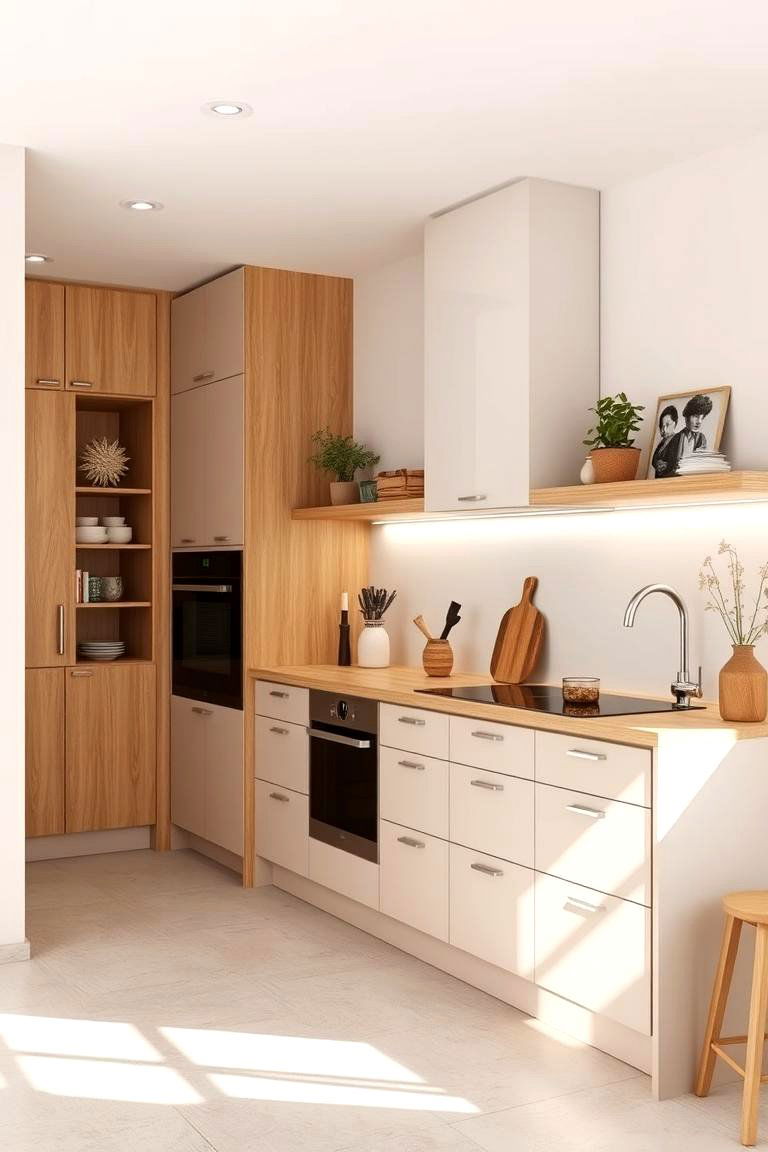
Soft neutral tones, like beige, taupe, and light gray, create a calm, natural environment in the kitchen. These colors reflect light beautifully, making the space feel airy and expansive. Neutral tones allow other natural elements, such as wooden cabinetry or stone countertops, to stand out while maintaining a serene atmosphere. These hues are timeless and versatile, easily paired with other colors or materials for a balanced look. Soft neutrals help create a tranquil kitchen that remains stylish and functional, no matter the trends.
15. Handcrafted Kitchen Accessories
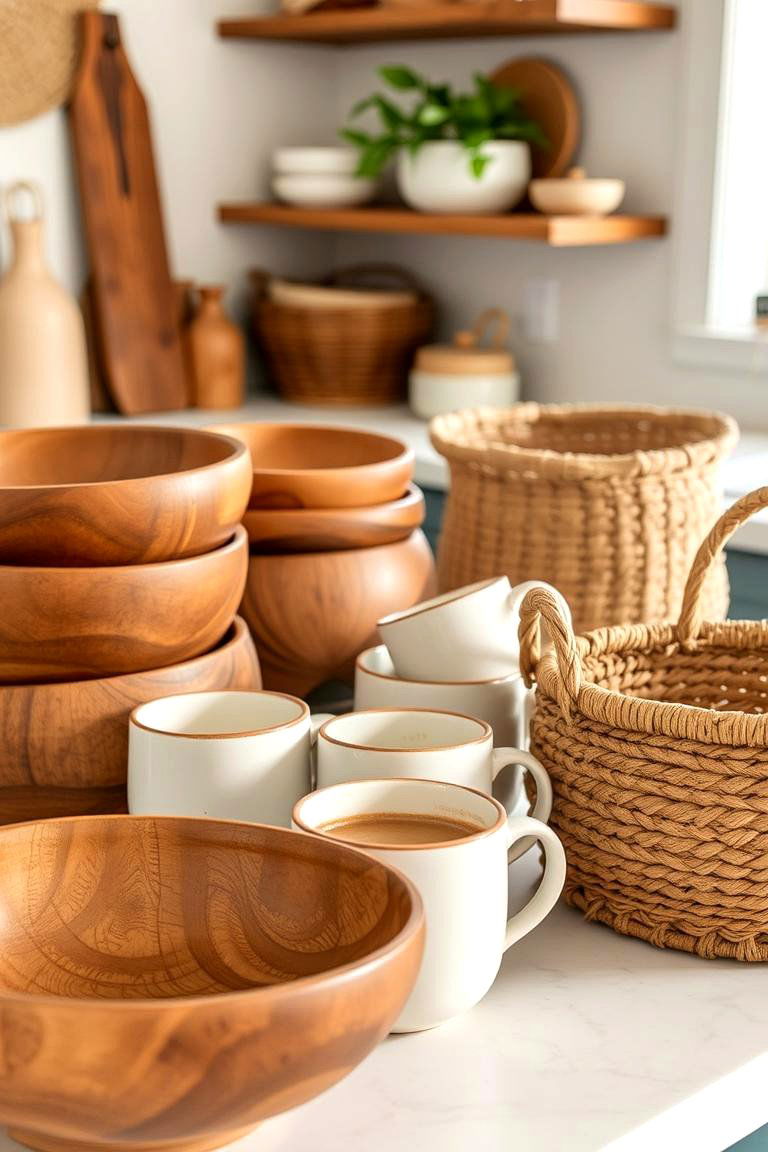
Handcrafted kitchen accessories, such as wooden bowls, ceramic mugs, and handwoven baskets, add a personal and artisanal touch to your kitchen. These unique pieces create a connection to nature through their craftsmanship and materials. Handcrafted accessories bring warmth and texture, creating a cozy, inviting atmosphere. These items can also support sustainable practices by reducing mass-produced, disposable goods. The beauty of handcrafted accessories lies in their individuality and the story behind their creation, making them perfect for a natural kitchen design.
16. Natural Fiber Rugs
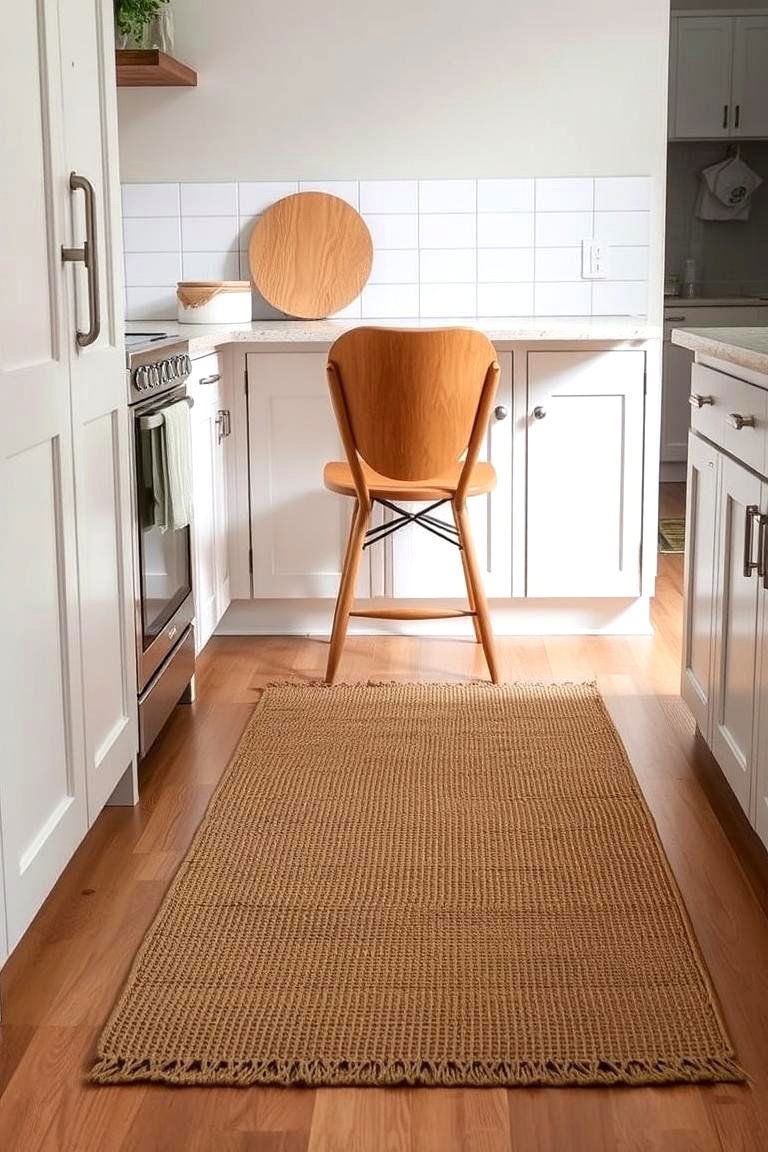
Adding a natural fiber rug to your kitchen, such as one made from jute or sisal, introduces texture and warmth underfoot. These rugs are durable, sustainable, and easy to clean, making them an excellent choice for high-traffic areas. The earthy tones and natural materials of these rugs enhance the organic feel of the kitchen, grounding the design with subtle elegance. Rugs made from natural fibers are also biodegradable, contributing to a sustainable environment. With their neutral tones, they blend seamlessly into a natural kitchen while offering comfort and style.
17. Minimalist Design with Natural Materials
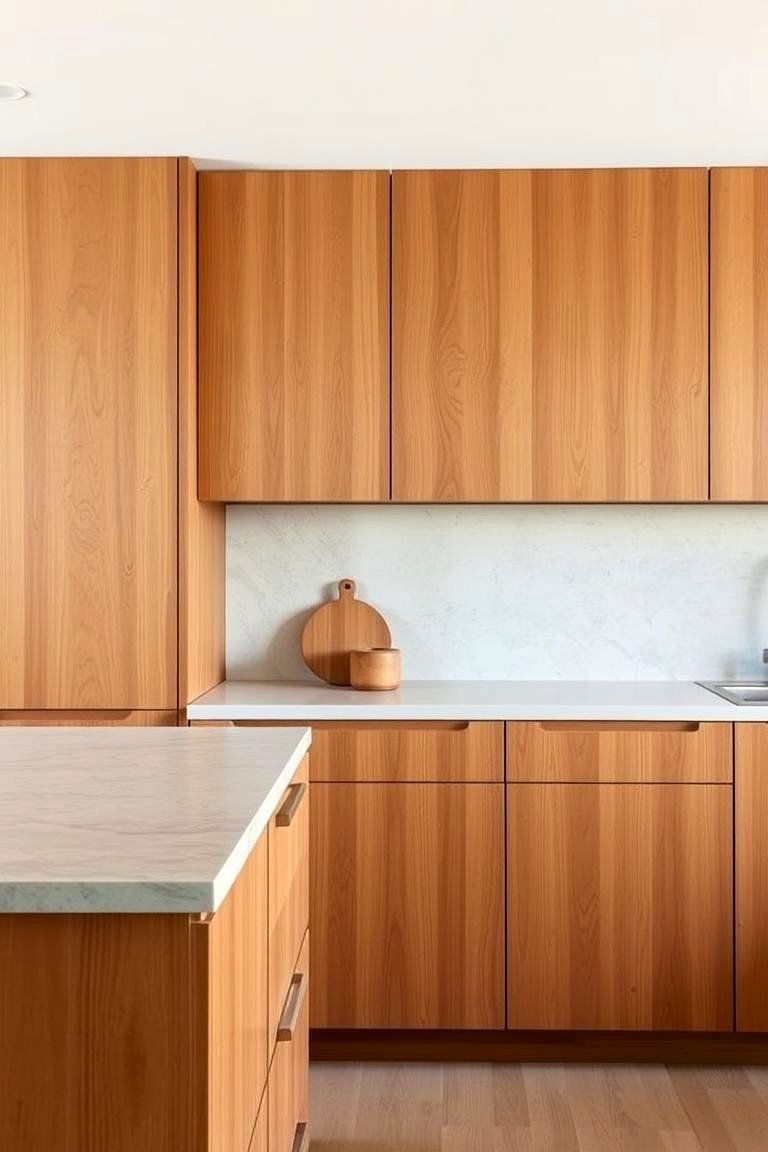
A minimalist design featuring natural materials focuses on simplicity and functionality while embracing the beauty of organic elements. The clean lines and lack of clutter allow materials like wood, stone, and metal to take center stage. This approach creates a serene, peaceful kitchen where every element serves a purpose. A minimalist kitchen with natural materials feels both modern and timeless, making it a great choice for those who appreciate both form and function. The result is a calm, organized space that enhances your kitchen’s natural beauty.
18. Exposed Wooden Beams

Exposed wooden beams add a rustic, natural touch to any kitchen. The raw beauty of wood adds texture and character, creating a cozy, inviting atmosphere. Whether painted or left in their natural state, wooden beams help define the space and contribute to a warm, earthy ambiance. This design element works particularly well in high-ceiling kitchens, as it draws the eye upward and emphasizes the room’s height. Exposed beams provide architectural interest and highlight the natural materials used in the rest of the design.
19. Natural Wooden Islands

A kitchen island made from natural wood creates a focal point that’s both functional and visually striking. Wooden islands offer ample workspace and storage while adding a warm, organic feel to the kitchen. The rich grains and textures of the wood contrast beautifully with sleek countertops and cabinetry. A natural wooden island can be customized to suit your space, whether through the addition of shelving, drawers, or unique finishes. This versatile feature ties together the natural elements of your kitchen, making it both practical and stylish.
20. Copper Accents
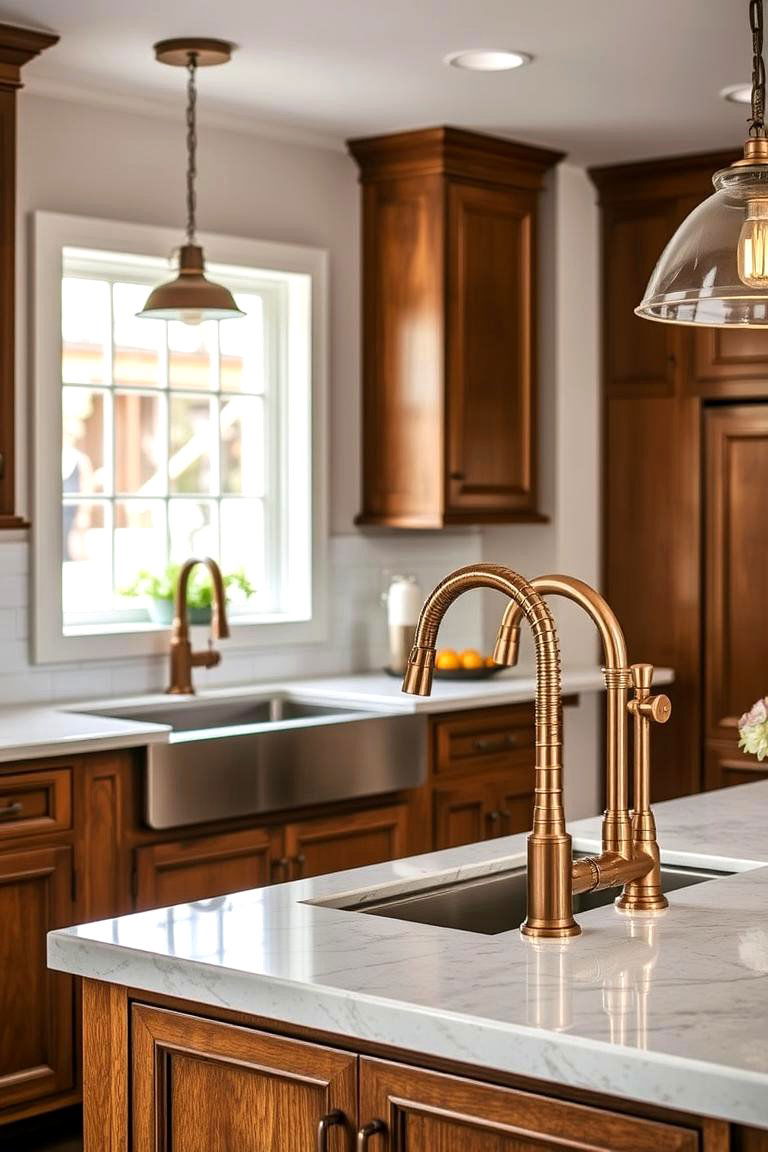
Copper accents, such as faucets, handles, and light fixtures, add a touch of warmth and elegance to a natural kitchen. The reddish-gold hue of copper complements natural materials like stone and wood, creating a cohesive design. Copper is not only aesthetically pleasing but also durable and resistant to corrosion, making it ideal for kitchen use. The natural patina that copper develops over time adds character and charm. Whether used in small details or as a larger statement piece, copper accents enhance the kitchen’s beauty and create a welcoming atmosphere.
21. Concrete Countertops
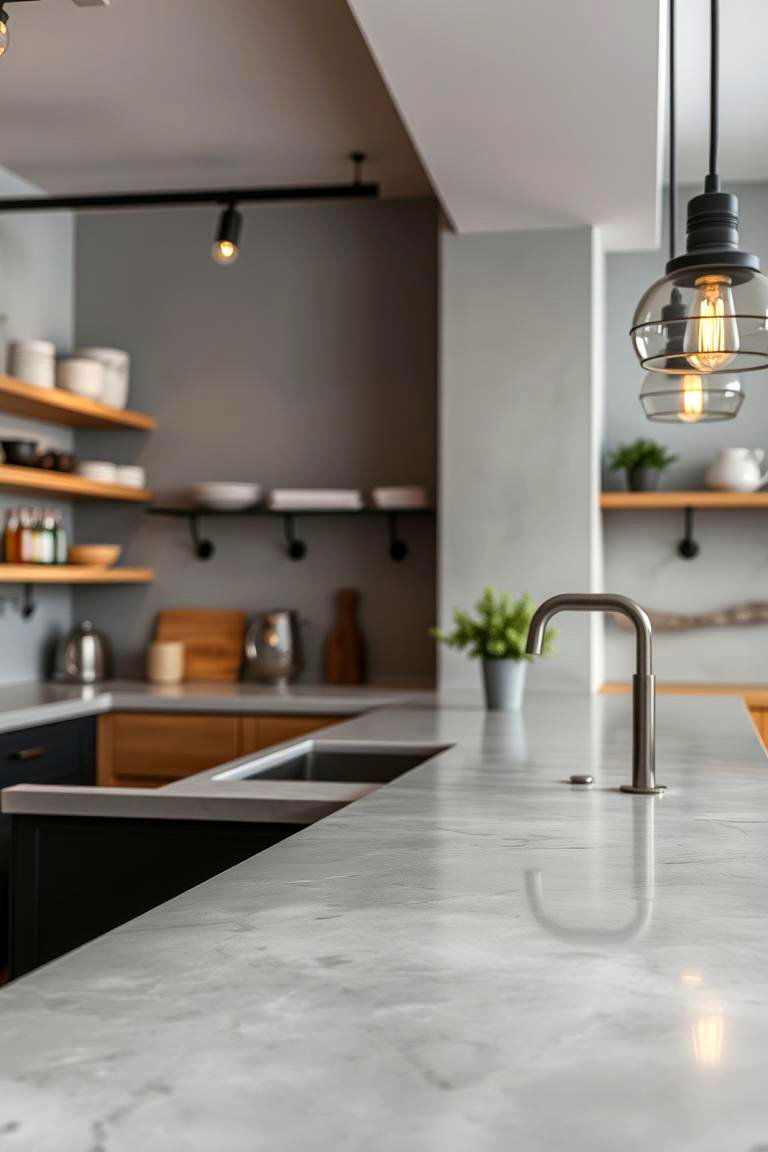
Concrete countertops offer a modern yet earthy touch to any natural kitchen design. These countertops can be customized with different textures and finishes, such as smooth, matte, or polished. Concrete’s industrial feel pairs beautifully with other natural materials like wood, stone, and metal. It is highly durable and resistant to heat, scratches, and stains, making it a practical option for a high-functioning kitchen. Concrete also has a unique, minimalist aesthetic that can complement a range of kitchen styles, from rustic to contemporary.
22. Nature-Inspired Lighting Fixtures
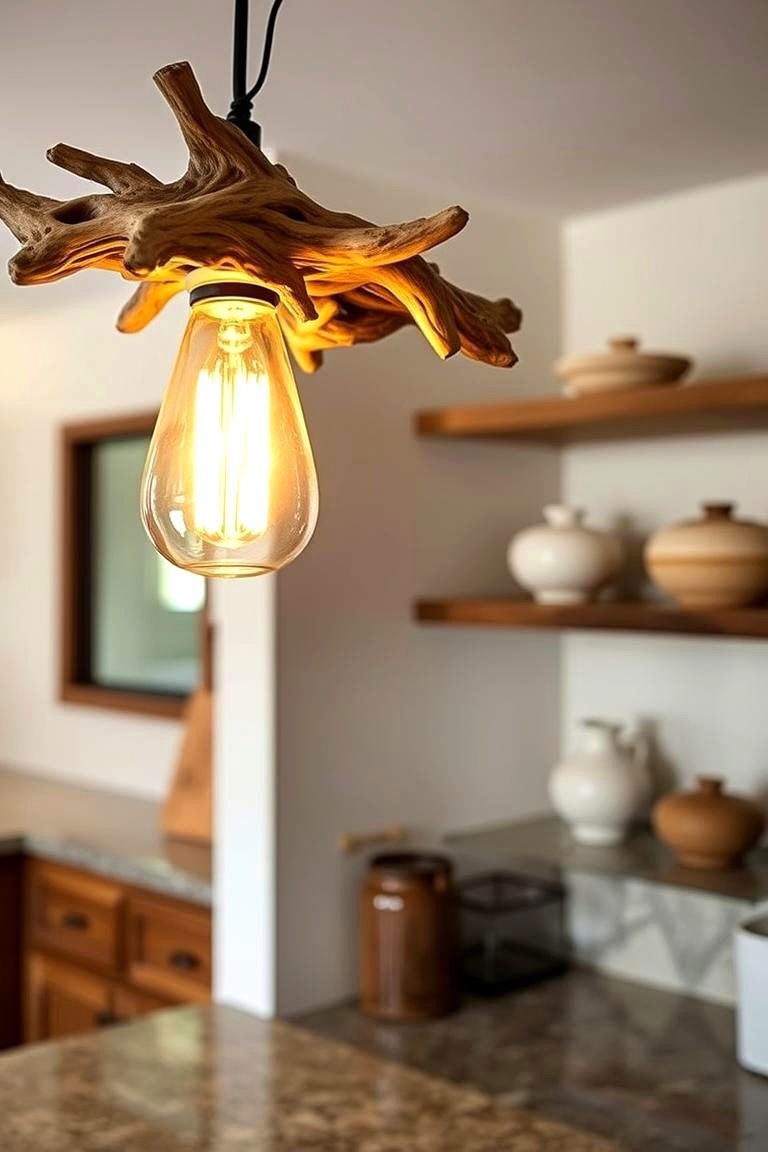
Nature-inspired lighting fixtures, such as those made from driftwood, wicker, or raw metal, bring the outdoors into your kitchen while illuminating the space beautifully. These light fixtures combine natural materials with thoughtful design, creating a cozy and functional focal point. Whether pendant lights or chandeliers, nature-inspired lighting creates a warm, welcoming atmosphere that complements your natural kitchen design. They provide both aesthetic appeal and practical lighting, offering soft illumination that enhances the overall ambiance of the room.
23. Clay Pottery Decor
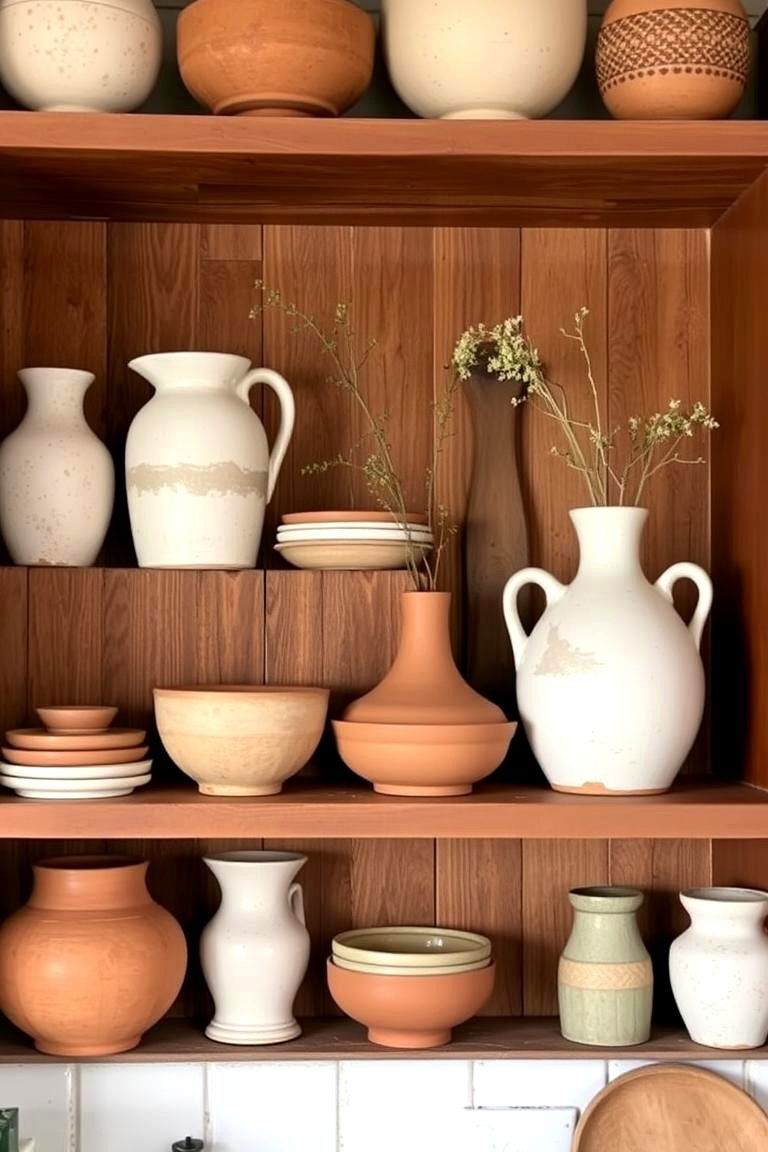
Clay pottery decor adds an artisanal, earthy touch to your kitchen. Vases, bowls, and other ceramic pieces crafted from clay provide a handmade quality that connects your kitchen to nature’s beauty. These pieces can be used for functional purposes, like storing fresh produce, or simply as decorative accents. Clay pottery adds texture and color to your kitchen, creating an inviting and grounded atmosphere. With their natural, organic shapes, these pieces help create a warm, homey environment that’s perfect for a natural kitchen design.
24. Neutral Wooden Dining Sets

A neutral wooden dining set creates a cohesive and harmonious look in a kitchen with a natural design. Made from light or medium-toned wood, these sets complement the earthy tones of stone countertops and wooden cabinetry. Wooden dining sets bring warmth to your kitchen, providing a comfortable and stylish place to gather. Their timeless design ensures they blend seamlessly with various kitchen styles, from contemporary to rustic. Choosing a wooden dining set enhances your kitchen’s natural beauty while offering functional seating for family and guests.
Conclusion:
These 24 natural kitchen design ideas demonstrate how you can create a beautiful, functional space that celebrates the organic elements around you. By incorporating sustainable materials, earthy tones, and timeless designs, you can cultivate a kitchen that promotes harmony with nature. Whether you prefer rustic charm, minimalist elegance, or eco-friendly features, these ideas provide practical yet stylish ways to enhance your kitchen. Embrace the beauty of nature in your cooking space and transform it into an inviting, earthy haven.


